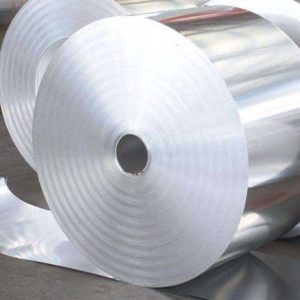aluminum foil Coatings generally can be classified under three categories: Decorative, Protective, and Heat-Sealing.

Decorative Coatings
A wide variety of resin coatings and lacquer-type synthetic formulations is used to decorate aluminum foil with both design and color. In color alone, the range of brilliant or satin metallic hues obtainable, as well as all of the opaque effects, is limitless.
Various film-former compounds are colored and blended with appropriate materials from the full availability of standard coating constituents to meet both application and end-use requirements. For example, decorative foil coatings are formulated to offer some of the following characteristics, as well as others common or peculiar to specific end uses: color match; color fastness; formability; alcohol (or other specific compound) resistance; and resistance to water immersion.
Protective Coatings
Protective coatings are applied to aluminum foil to shield printing inks from abrasion, or from water and/or alcohol, finger prints, or other potential damaging agent. Other coatings are applied to foil to insulate ingredients of certain food, or other type of product, from the metal, to avoid possible or known undesirable effect on either package or contents. Protective coatings also are used to streng then thin foils, where laminations are not required. Coatings also can be formulated to provide a printed surface with added resistance to sunlight. A number of protective coatings used have inherent or built-in heat-seal ability as an added bonus.
Each coating potential application should be analyzed individually, and the coating material and weight selected to satisfy requirements of applying the coating and of other converting operations, as well as the end use. Relative Resistance of Common Film Formers to Various Compounds is given in below.
Aluminum foil products also are provided with resistance to chemical and mechanical damage when an appropriate plastic film is laminated to one or both surfaces of the foil. Laminating is discussed in a separate section
Heat-Seal Coatings
Heat-seal coatings must provide strong, usually airtight seams and closures. It also is generally essential that these coatings be compatible with all surrounding materials with which they may come in contact, to protect both the seal and, for example, the contents of a package.
Heat-seal coatings of the vinyl type are most widely used on aluminum foil. Other types of foil heat-seal coatings are those based on cellulose nitrate, ethyl celluloses, methacrylates, chlorinated rubbers and rubber polymers.
The heat-seal bond strength between two coated surfaces increases slightly with increased film thickness. For the normal heat-seal coatings, the bursting strength added to the foil by the coatings is not significant. The effect of increasing the coating weight becomes important only above a coating thickness of one mil.
